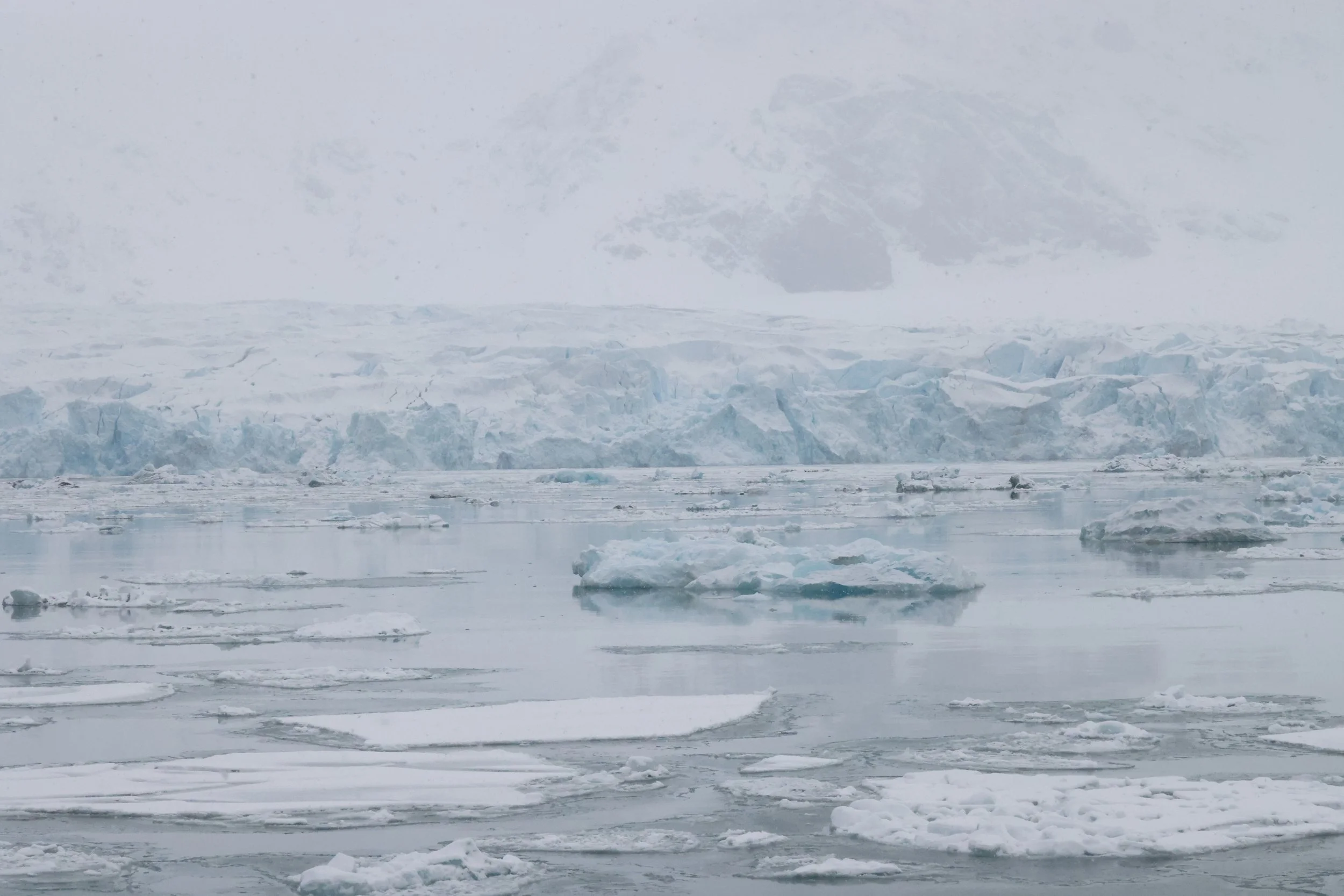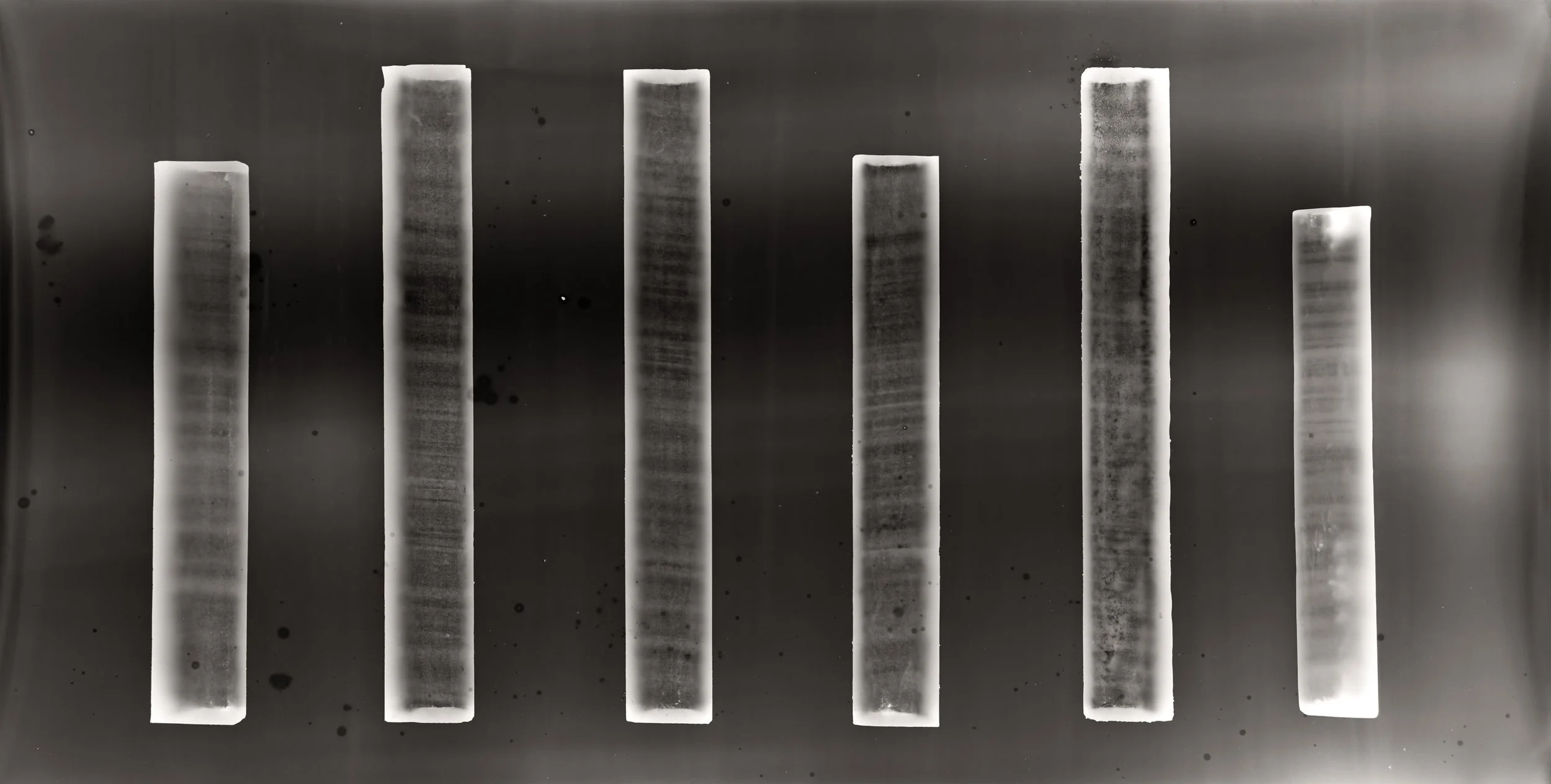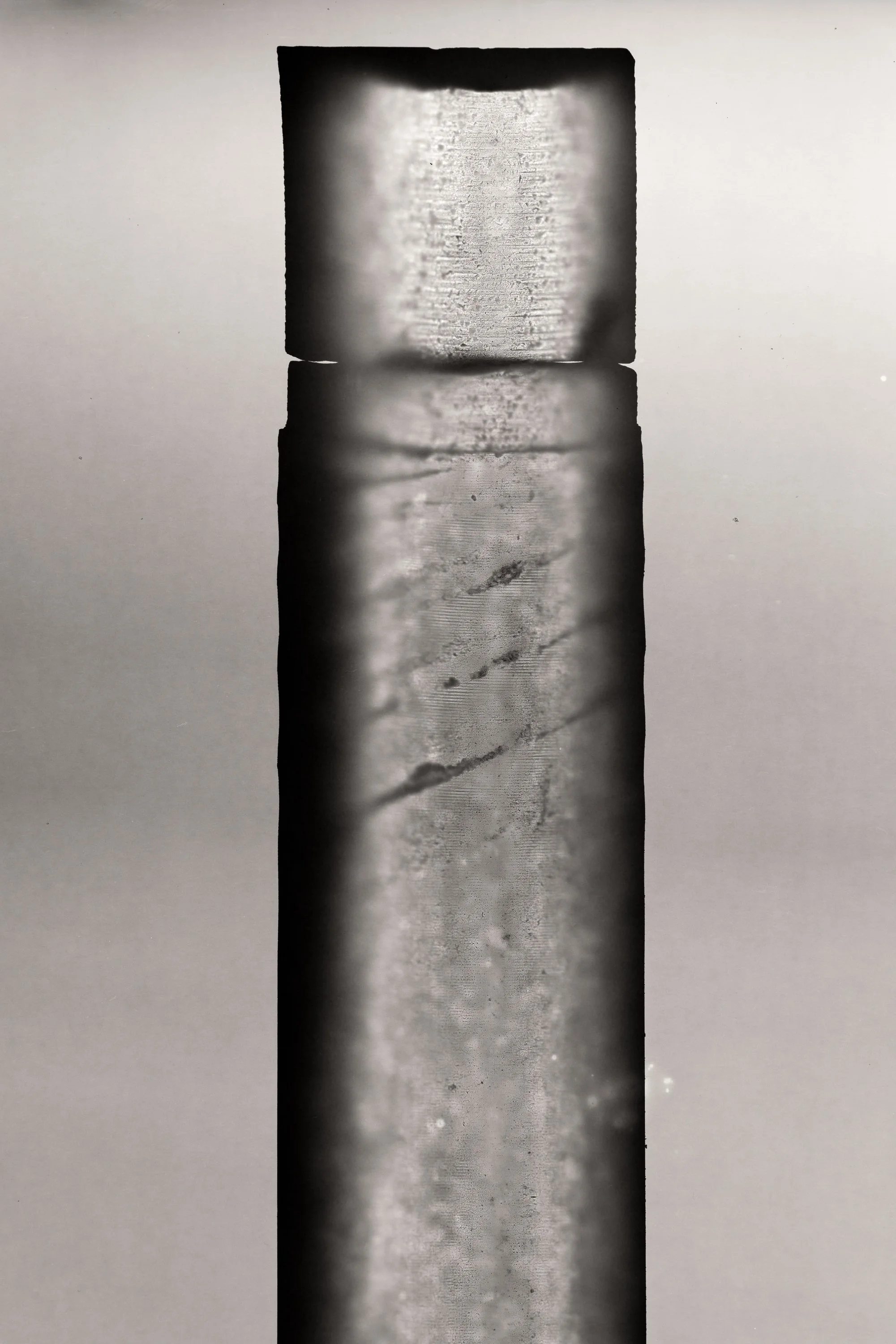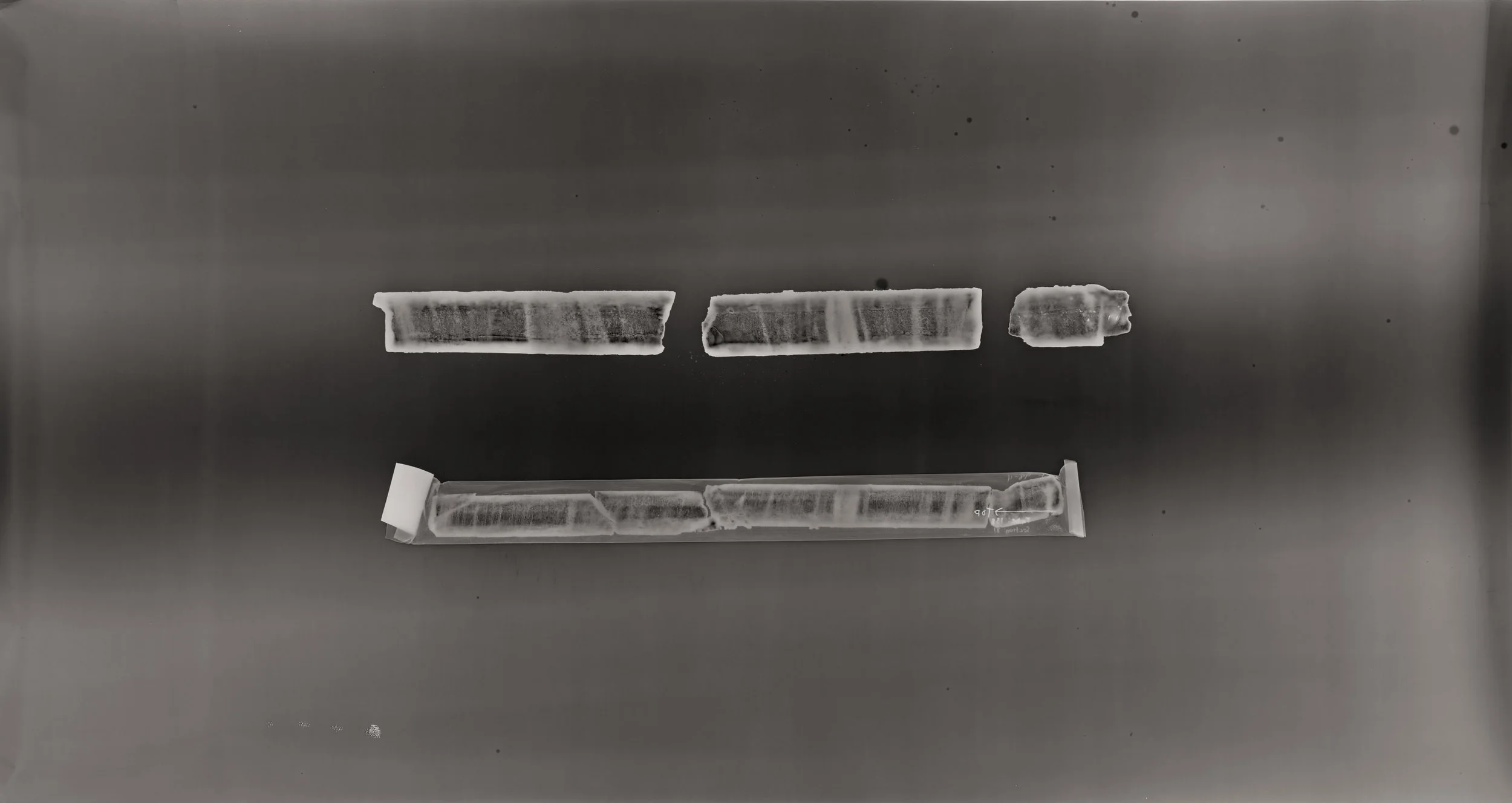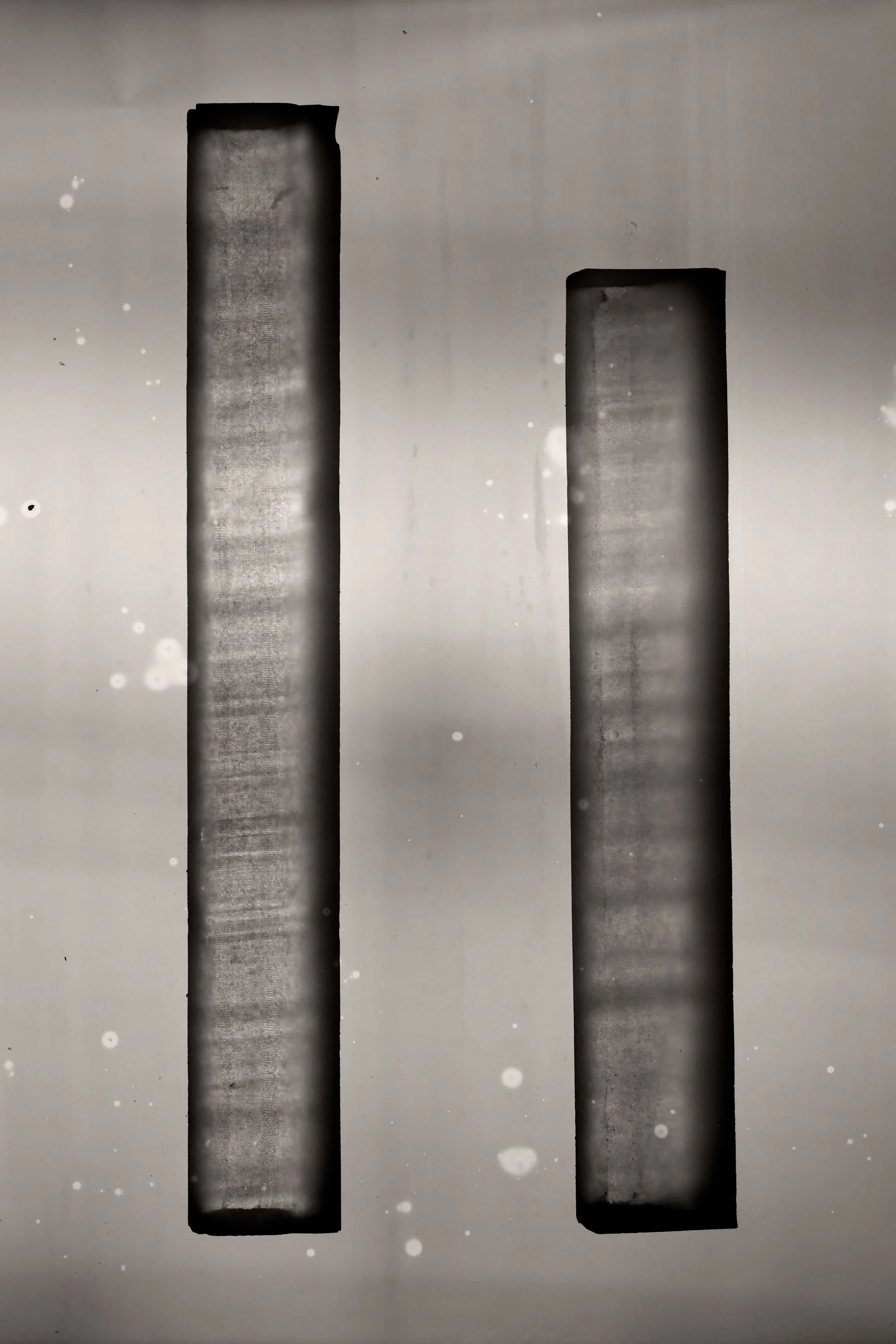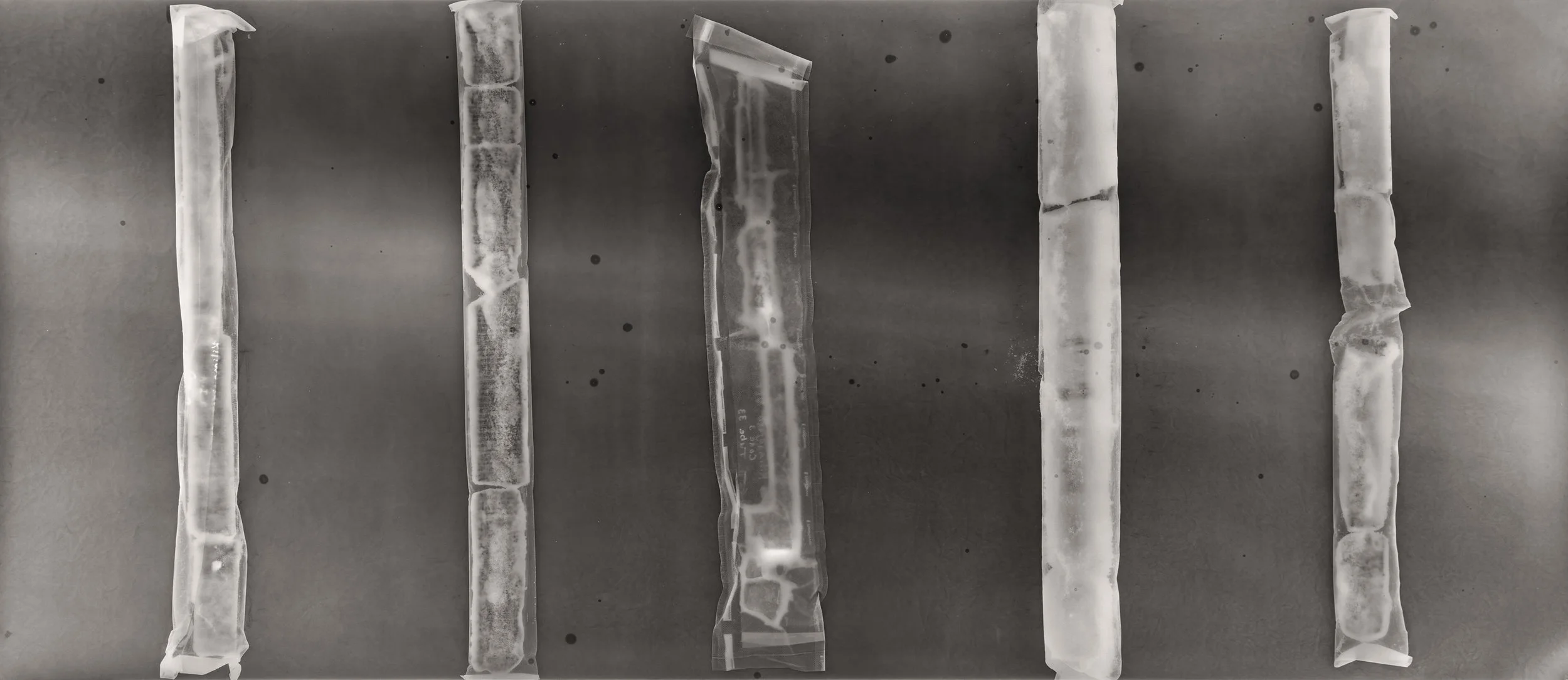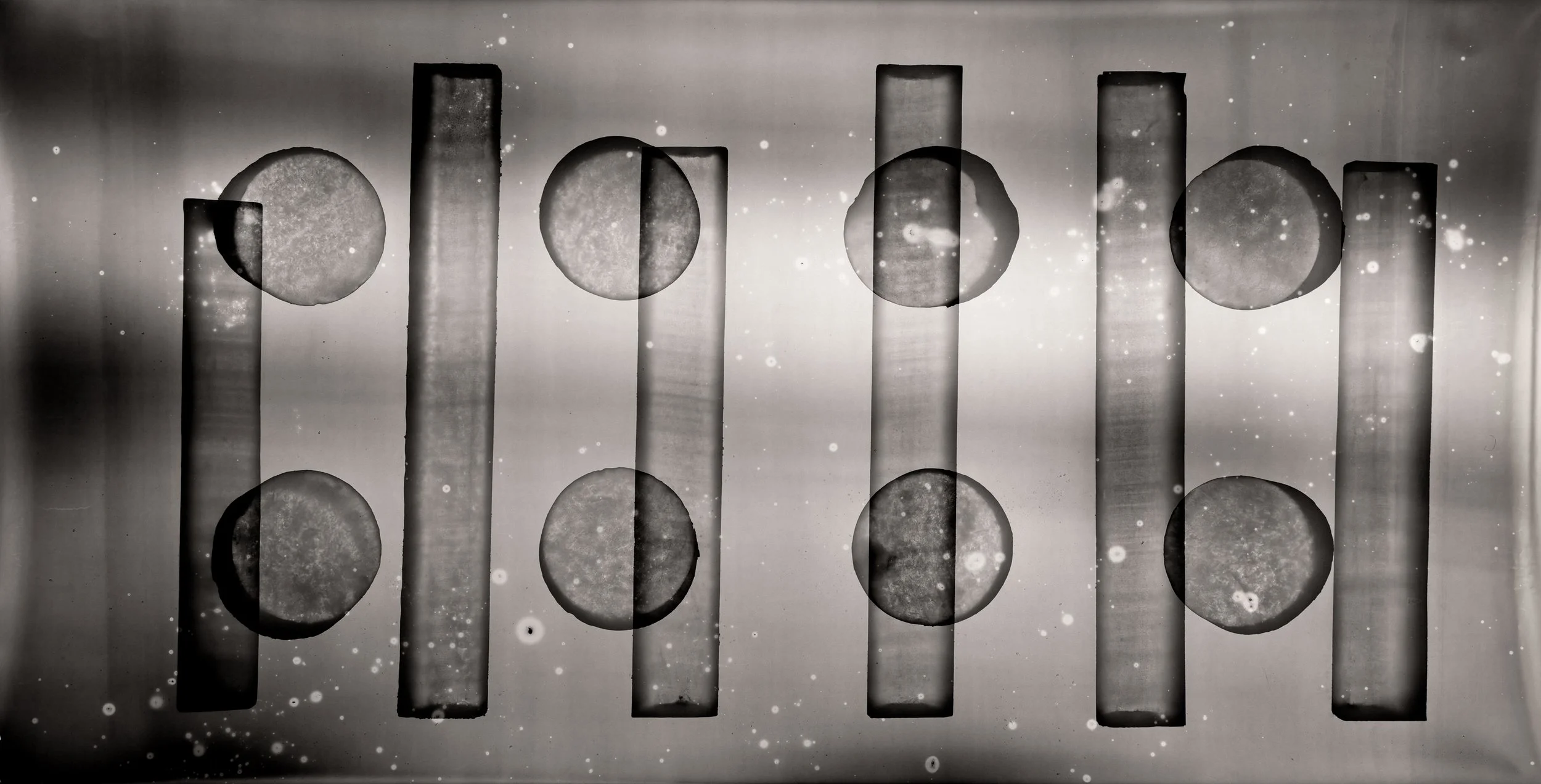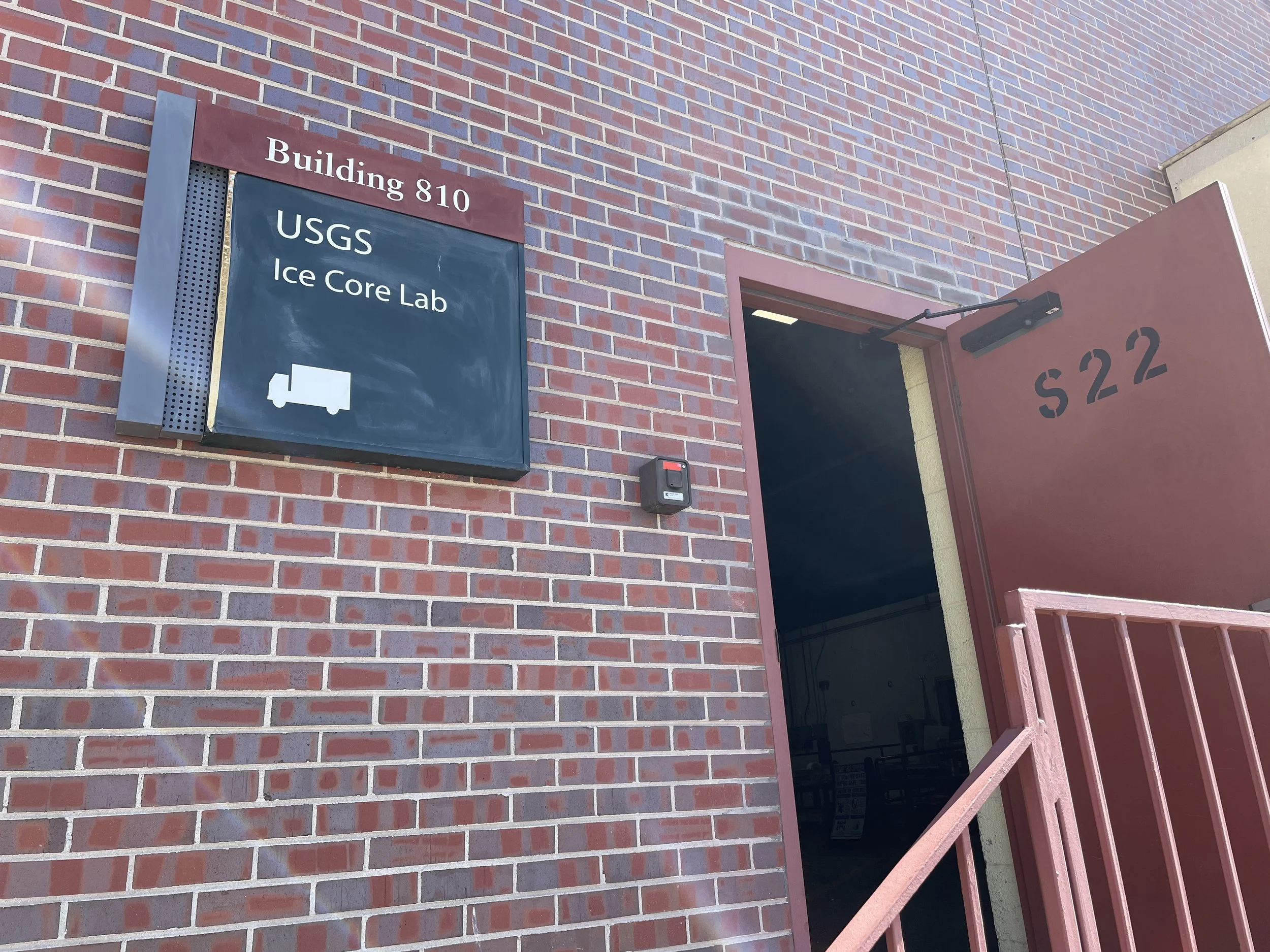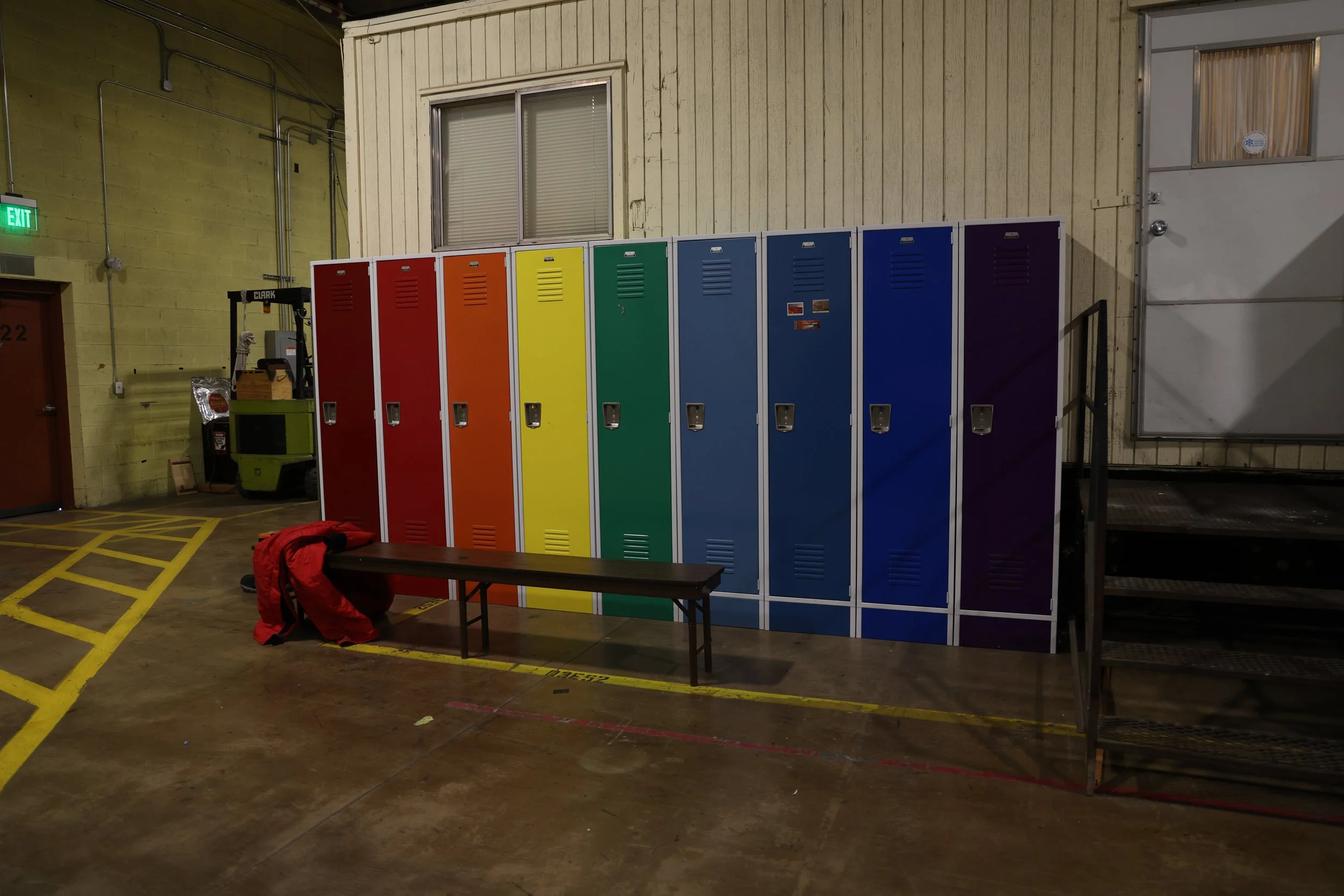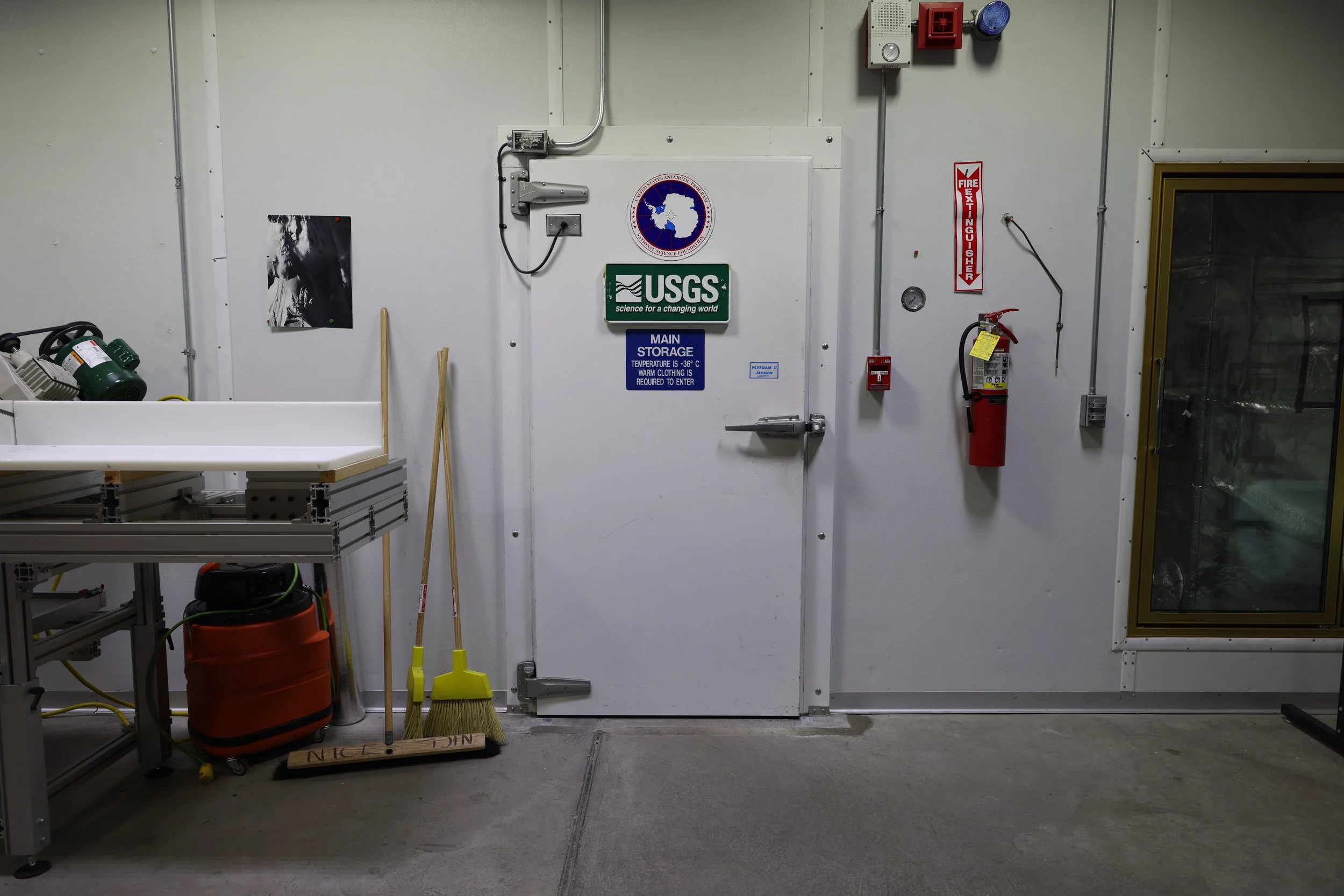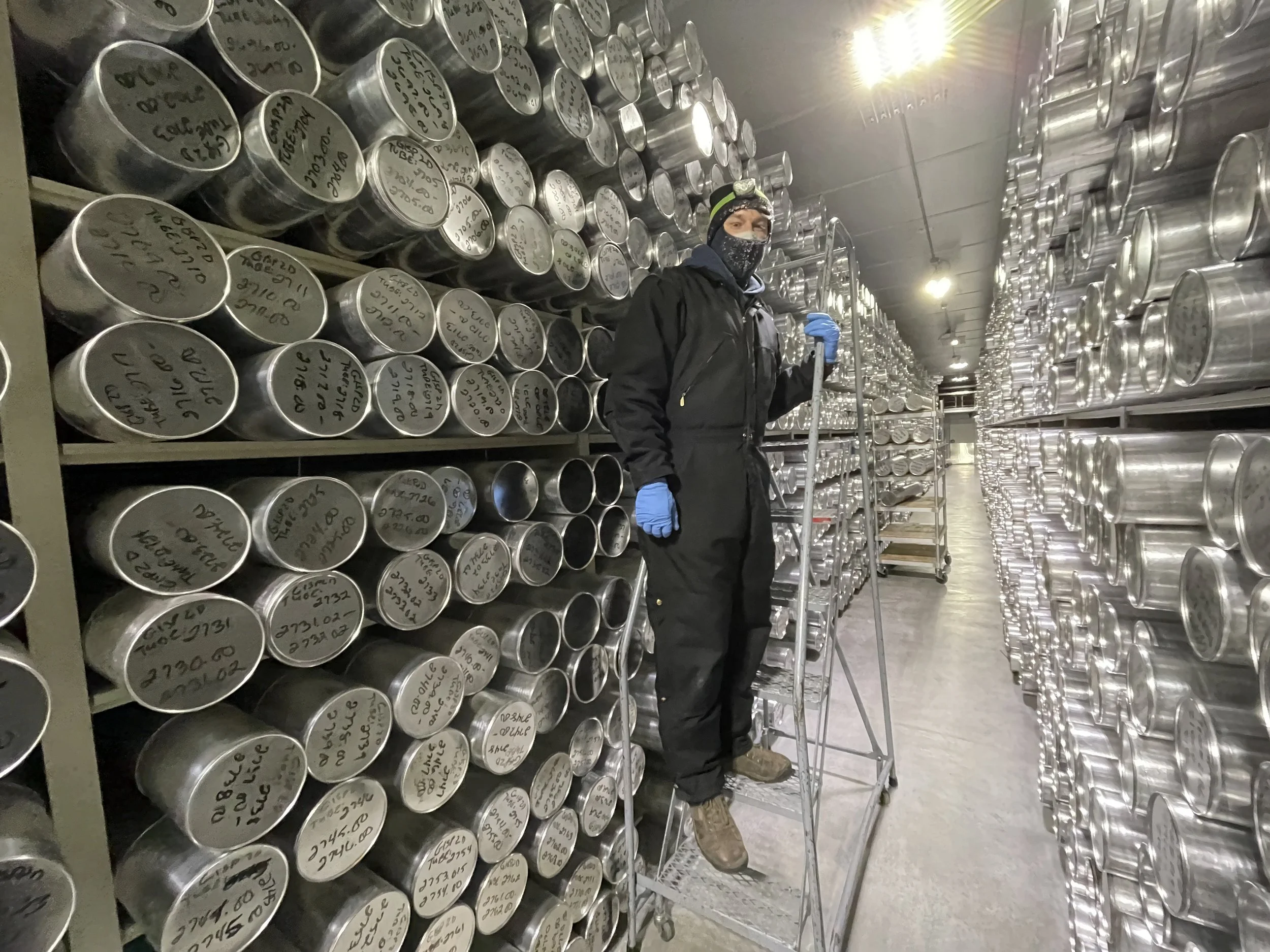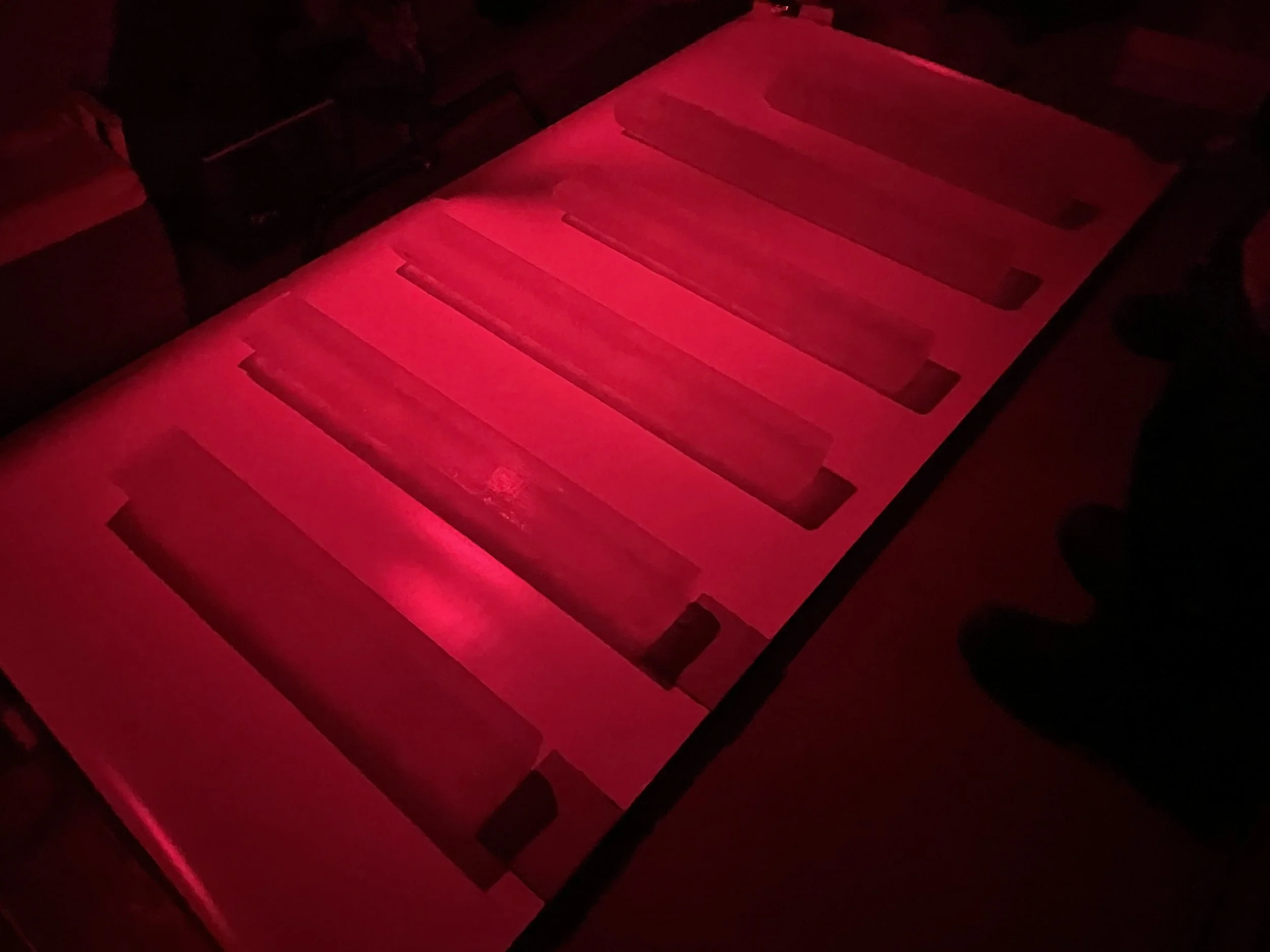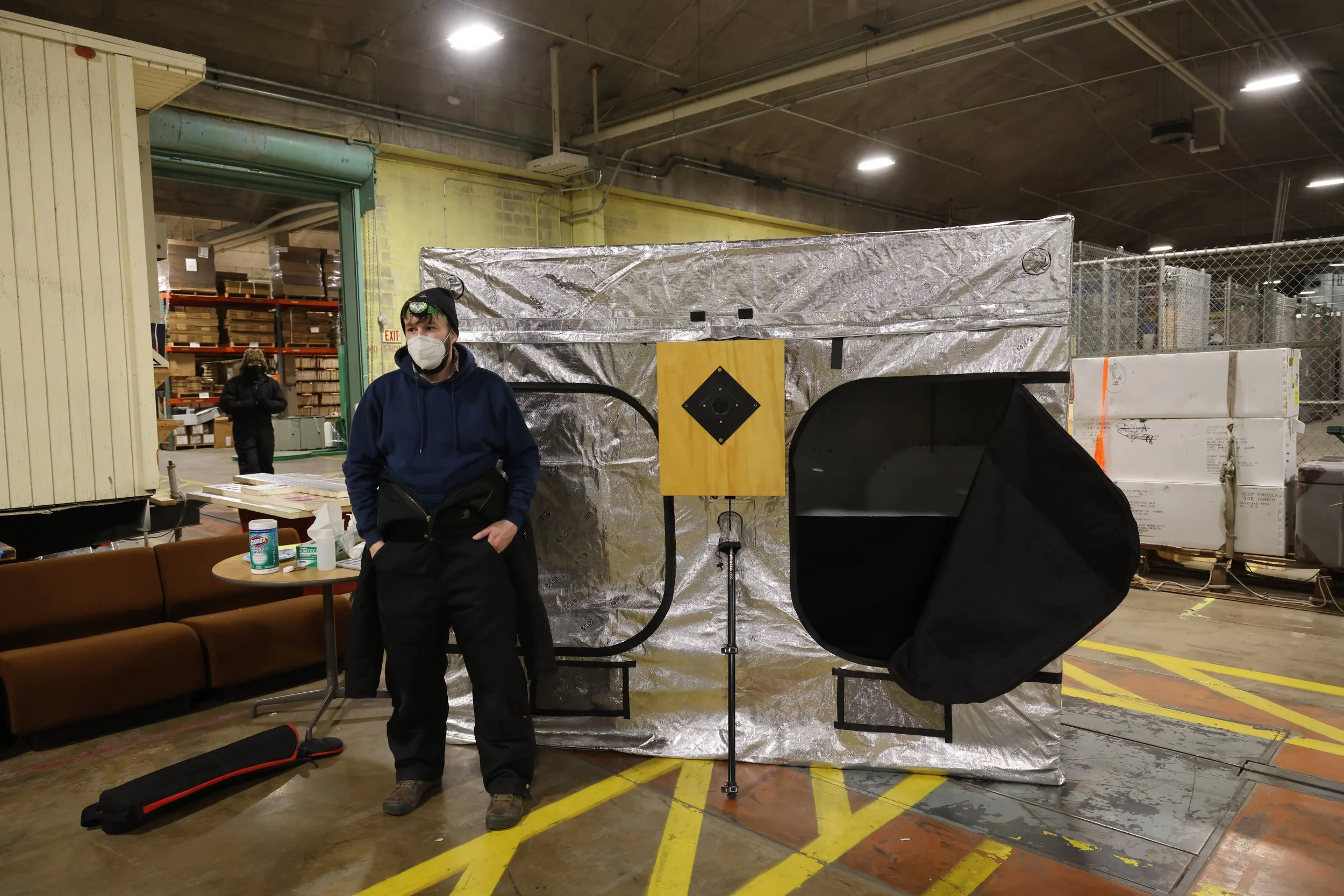Glacial Optics — Ice Core Studies
Glacial Optics - Ice Core Studies, 2022 - Ongoing
Photograms documenting ancient strata in ice core samples.
Continuing my Glacial Optics project, I visited laboratories where scientists study ice cores for clues to our climate past, to better predict out climate future. Glaciers form from snow, layer by layer, compacted over eons by the weight of accumulation. Inside these layers are trapped tiny air bubbles and particles of dust. By studying these trace elements scientists can reconstruct a detailed history of our planet’s climate stretching back almost a million years. As an artist, I wanted to capture something of the deep-time recorded in these cylinders of ice.
Working with ice core collections at the National Science Foundation Ice Core Facility (NSF-ICF) and the Byrd Polar & Climate Research Center, I constructed make-shift darkrooms within their frigid ice core storage areas so I could deploy giant sheets of photo paper and make photograms of ice cores. The resulting camera-less images capture not only the silhouettes of these ice samples, but also—thanks to their transparency—the air bubbles and internal layers within the ice. In this body of work, the concept of the ice lens is reduced to its most formal elements: light passing through ice to be recorded on film. The resulting images make visible the very strata which scientists study to track our climate history through deep time.
This is part of my ongoing series Glacial Optics, exploring glacier ice as a literal and conceptual lens through with to understand ourselves and the world. In this work I explore the ‘gaze of the glaciers’ as offering a perspective beyond the human fame —invoking the glaciers massive scale, its sense of deep time, and, increasingly in the face of climate change, its massive fragility.
This project was made possible in part by support form the Los Angeles County Museum of Art (LACMA) Art +Technology Lab Grant. Thanks to the team and the NSF-ICF for making this project possible. A special thanks to Alia Dietsch, Esther Duke, Kevin Hedin, Andrew Siegel and Derek Larsen for assisting!
